Tosh Berman's Blog, page 165
August 1, 2017
ADULT. - Uncomfortable Positions (feat. Lun*na Menoh) (Official Video)
Lun*na Menoh with the band ADULT.
Published on August 01, 2017 15:35
July 31, 2017
The Evening Series: Monday, July 31, 2017I’m pretty happy...
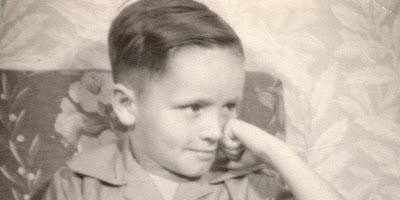
The Evening Series: Monday, July 31, 2017
I’m pretty happy-go-lucky middle aged man till the evening comes rowing on toward the end of the daylight hours. It is then, while drinking my first glass of wine, that my thoughts turn inward, expressing the dread that is very much not noticeable during the daylight hours. Each sip I take brings me to a place that is more real than my mornings. It is if I have been avoiding the surf, and finally, I can get on the wave, and let it ride me to a place that’s home. Which by any terminology will be called despair.
I spend most of the daylight hours at the Central Library here in Los Angeles. I have been working on a novel about a writer who based his life on the presence of Robert Benchley. Not being him exactly, but a character who approaches the sensibility of a Benchley in his life and writing. When I show my novel-in-progress to others, they have all commented on Benchley - why and who? I’m mostly interested in the “what” than the who or why of such commentary. Benchley represents the humor of the world that is not funny. I don’t see the joke during the daylight hours, but when in the home or at a bar nearby the library I often focus my thoughts on the world that exists in front of me, and how one can be funny inside that particular landscape. It’s no joke, you know?

As the tick-tock of the moments go on, and I’m in front of my laptop, which has to be the most unromantic method to writing, I think of the family unit and what it means to a writer describing the moments as they pass. Impossible to capture the fleeting thoughts as I drink more. Truman Capote, a well-known lover of the sauce that takes one to other places, wrote that it is impossible to write when drunk. Like his commentary that Kerouac wasn’t writing, just typing, he is clearly wrong. As the cloud becomes thick with deep insight into a memory that comes and goes, like a humming refrigerator in the middle of the night that keeps one awake. The thought comes back to the family and what that means to me, and therefore the world. I come to a conclusion after looking at this page for an hour that the family could care less about the world.
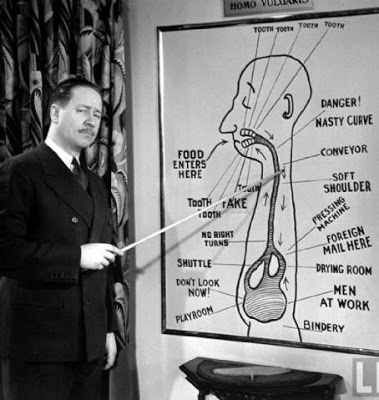
If you can see me now, one would notice a downturn frown on my face. Happiness is now a distance, and as I look outside the darkness, it seems to me to be a portrait of yours truly. Handsome yes, but sad as well. My time spent in hell, which looks very much like heaven, is my prison. I made these four walls with additional space for windows all around me, and I have no one else to blame except yours truly. I read Benchley to get insight and reflect on a time when social drinking was looked upon as an active series of steps to one’s betterment. Now, I can see the false footsteps to that ladder to success. It’s a myth or image supplied by my ego and taste. I remember reading a quote by a wise older man. He said: “Look down at me, and you see a fool; look up at me, and you see a god; look straight at me, and you see yourself.” Which proves that one should at first, be standing up than sitting down. And second, never look at someone straight on. It’s best to study that person perhaps behind their back.
I will sit here, drink wine, till the bottle is empty. Then I will go to bed. I will dream. Everything will be fine and dandy in the morning. Till the evening comes again (and again).
Published on July 31, 2017 16:57
July 29, 2017
The Evening Series: Saturday, July 29, 2017

The Evening Series: Saturday, July 29, 2017
The evening is unnerving. There is the sense of dread just right before I fall asleep. It feels like the dream world is knocking on my waking consciousness and waiting to enter. The entrance is fearful because I don’t feel that there is an exit. Once I enter the opening of this world, it will close on me, and I will be held a prisoner in this world of not of my making. I'm aware that there is a bridge between the two worlds, but I also feel like I'm living two lives in one. The images that come to me at nighttime are ones of extreme textural sensitivity. I recall in a dream that someone gave me a book, and the volume had regular pages, but also a series of round circular holes that are cut out. One can read the book, but you also read the following page, due to the hole, which is in the center of the page. The placement of the text was a way of looking into the future, or logically on the next page.

Food is never part of my dreams. I don’t recall ever having a meal or eating food in my dream world. I wonder about this because the food is so sensual, and one would think that once in the dream world, the pleasures or fears of tasting a meal would for sure be part of the landscape. Objects like books come in and out of the picture, and again, with vivid detail. I often wake up from a dream and find myself that the book I have dreamed about doesn’t exist. One of the reasons why I like to write is to obtain the book that comes with my dream.
The other odd thing concerning my dreams is that a lot of times it’s a third person perspective. Sometimes I’m one of the characters in the dream narrative, but it’s not me telling the story. It’s like watching a film in a movie theater, where I’m just a passive viewer. In most cases it’s a thriller, where I’m (as a character) is chased or I’m chasing someone. The incident or situation can be in a danger zone, but as a viewer, I never feel panic or being upset by what is unfolding in front of my eyes.
I dream of people I know, and I don’t know. The ones I do know seem to be individuals that I don’t think about in my current life. For instance, last night I had a dream about someone I used to work with, but for the life of me, cannot remember his name. His presence in the dream is powerful, and what I remember of his personality is very accurate. I never think of him. He doesn't matter to me now, nor in the past, except it’s someone I had to see due to my occupation at the time, but also the daily schedule of seeing someone you work with in the workplace.
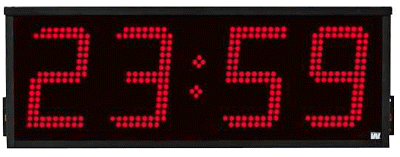
I have had sexual encounters in my dream. Very satisfying and not always with a woman I know in my waking life. The sensuality of the moment is that I’m enjoying myself greatly, and I’m not thinking of anything except the pleasure I’m getting out of the sexual encounter. When I wake up from such a dream, I never feel depressed or sorry to be back in bed. Instead, I look at the ceiling and its shadows due to the lighting of the trees outside my window. Sexual dreams are the only passage between the two worlds where it's a pleasurable experience.
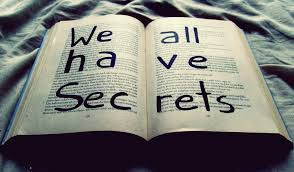
On the other hand looking at the digital clock across the way makes me think of time passing. Or in the future, for instance, what needs to be done for the next day. I fall asleep, and then I have a series of dreams that are anxiety driven due to schedules being missed or appointments that I have forgotten. I tend to have embarrassing moments such as being naked in a place or situation, where I clearly shouldn’t be in the nude. There is a feeling that if I ignore my nakedness, then everyone else in my dream will do the same. So no one calls me out being in the nude, but I’m entirely conscious that I’m naked and the fear of being discovered in such a state causes anxiety. What’s interesting to me is that I have no fear of being found naked in the awakened life. Now, thinking of it, I think it’s more about keeping secrets. The exposure or having some form of truth coming out that can harm you. That’s the fear. I have many secrets.
- Tosh Berman
Published on July 29, 2017 16:21
The Evening Series: Saturday, July 29, 2017The evening is...

The Evening Series: Saturday, July 29, 2017
The evening is unnerving. There is the sense of dread just right before I fall asleep. It feels like the dream world is knocking on my waking consciousness and waiting to enter. The entrance is fearful because I don’t feel that there is an exit. Once I enter the opening of this world, it will close on me, and I will be held a prisoner in this world of not of my making. I'm aware that there is a bridge between the two worlds, but I also feel like I'm living two lives in one. The images that come to me at nighttime are ones of extreme textural sensitivity. I recall in a dream that someone gave me a book, and the volume had regular pages, but also a series of round circular holes that are cut out. One can read the book, but you also read the following page, due to the hole, which is in the center of the page. The placement of the text was a way of looking into the future, or logically on the next page.

Food is never part of my dreams. I don’t recall ever having a meal or eating food in my dream world. I wonder about this because the food is so sensual, and one would think that once in the dream world, the pleasures or fears of tasting a meal would for sure be part of the landscape. Objects like books come in and out of the picture, and again, with vivid detail. I often wake up from a dream and find myself that the book I have dreamed about doesn’t exist. One of the reasons why I like to write is to obtain the book that comes with my dream.
The other odd thing concerning my dreams is that a lot of times it’s a third person perspective. Sometimes I’m one of the characters in the dream narrative, but it’s not me telling the story. It’s like watching a film in a movie theater, where I’m just a passive viewer. In most cases it’s a thriller, where I’m (as a character) is chased or I’m chasing someone. The incident or situation can be in a danger zone, but as a viewer, I never feel panic or being upset by what is unfolding in front of my eyes.
I dream of people I know, and I don’t know. The ones I do know seem to be individuals that I don’t think about in my current life. For instance, last night I had a dream about someone I used to work with, but for the life of me, cannot remember his name. His presence in the dream is powerful, and what I remember of his personality is very accurate. I never think of him. He doesn't matter to me now, nor in the past, except it’s someone I had to see due to my occupation at the time, but also the daily schedule of seeing someone you work with in the workplace.

I have had sexual encounters in my dream. Very satisfying and not always with a woman I know in my waking life. The sensuality of the moment is that I’m enjoying myself greatly, and I’m not thinking of anything except the pleasure I’m getting out of the sexual encounter. When I wake up from such a dream, I never feel depressed or sorry to be back in bed. Instead, I look at the ceiling and its shadows due to the lighting of the trees outside my window. Sexual dreams are the only passage between the two worlds where it's a pleasurable experience.

On the other hand looking at the digital clock across the way makes me think of time passing. Or in the future, for instance, what needs to be done for the next day. I fall asleep, and then I have a series of dreams that are anxiety driven due to schedules being missed or appointments that I have forgotten. I tend to have embarrassing moments such as being naked in a place or situation, where I clearly shouldn’t be in the nude. There is a feeling that if I ignore my nakedness, then everyone else in my dream will do the same. So no one calls me out being in the nude, but I’m entirely conscious that I’m naked and the fear of being discovered in such a state causes anxiety. What’s interesting to me is that I have no fear of being found naked in the awakened life. Now, thinking of it, I think it’s more about keeping secrets. The exposure or having some form of truth coming out that can harm you. That’s the fear. I have many secrets.
- Tosh Berman
Published on July 29, 2017 16:21
July 28, 2017
Tosh Berman Reading at ARTBOOK @ Hauser & Wirth Los Angeles, plus Others
I, Tosh Berman, will be doing a reading with Leslie Dick, an. cinquepalmi, & Lucy Blagg. Friday, August 4, 7PM.
Artbook at Hauser & Wirth is pleased to present Out of the Hat , a reading series for just two Fridays in August where various artists, writers, dancers, poets, and theoreticians will share—and be called—to the stage through an old adage of chance: the pulling of names out of a hat.
Poetics, theories on sleep, movement and narratives will share the stage at Artbook beginning with a stellar line up on Friday August 4th with Tosh Berman, Lucy Blagg, an. cinquemani and Leslie Dick. This line up will then be followed up by another stellar line up on Friday August 25th with Evan Burrows, Michael Kennedy Costa, Simone Forti, Michael Ned Holte and Matias Viegener.
The event will be facilitated by Brigitte Nicole Grice and Ravenne Swanner and hosted by Artbook at Hauser & Wirth Los Angeles.
Tosh Berman is a writer and publisher. As the publisher of TamTam Books, he published books by Boris Vian, Serge Gainsbourg, Guy Debord, Jacques Mesrine, Ron Mael & Russell Mael (Sparks) and Lun*na Menoh. As a writer he wrote a memoir/travel journal/ music critique "Sparks-Tastic," (Barnacle Books) a book of poems "The Plum in Mr. Blum's Pudding (Penny-Ante)," and a forthcoming childhood memoir of life with artist father Wallace Berman "Beat Boy" (City Lights Books).
Lucy Blagg is from Los Angeles, California. Their chapbook, Semi Fleshy, was published by n0 eg0 p0ems in 2016. With Lainey Racah, they run the Los Angeles Archival Poetry Project.
an. cinquepalmi metaphorizes her doubt & lurks for pay in los angeles. she was a transparent extra in the extended universe. find more ursa any online w Apogee, Susan the Journal & Anomaly. her orchid’s name is *lilith too*; it’s not dead yet either.
Leslie Dick is a writer and critic living in Los Angeles. She was full-time Critic in Sculpture at Yale School of Art for the academic year 2016-17. Leslie Dick is currently Co-Director of the Art Program at CalArts, where she has taught since 1992.
Evan Burrows is a poet and musician who lives in Los Angeles.
Published on July 28, 2017 12:25
Sparks - Edith Piaf (Said It Better Than Me) (Official Audio)
The new great tune from Ron Mael and Russell Mael Sparks. It's hard not to play this over and over again.
Published on July 28, 2017 10:19
July 27, 2017
The Evening Series: Thursday, July 27, 2017

The Evening Series: Thursday, July 27, 2017
I spend the day looking forward to 7 pm. Cocktail hour. I think if I stood in front of the blank computer screen it would make the time go faster. It doesn’t. I pretty much schedule my day on a daily basis. I know exactly when I wake up, which is 7 am, and I know when I will have my first cup of black coffee. I then start writing, or to be honest, think about writing, and then when I put my first word on the page, it’s lunch time. I then have lunch which is usually something that puts me to sleep. I go to the couch and read, which means I close my eyes for 40 minutes or so. When I wake up or should say, when I leave the couch, I come back to the computer to do some more work. I put the first word on the page, and then think about changing that word. This goes on until 7 pm when I have my first sip of white wine.
When I am drinking wine, I don’t want to see or hear from anyone. One may call me on the phone, but there shall be nothing but silence on the other end. I reserve this time for me and my thoughts. Not saying that this is anything different from the daily writing chore I put myself through. To focus on oneself takes a great deal of concentration. I think therefore I am.
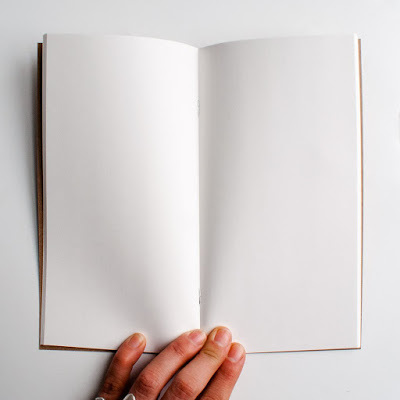
I have been working on a short story that is taking a long time to complete. From the very first day, I hated the story. Yet, I felt compelled to finish the narrative. It’s a strange thing to struggle on a piece of writing that one hates, and going through the motion of trying to complete it. You have no interest in the story, so, therefore, who can appreciate this tale that has no or gives no pleasure whatsoever. It’s maddening. The waste of the hours to work on such folly is a terror. Then again, there are pieces of literature that I have been working on and off for the last 40 years. It sucked 40 years ago, and it still sucks today. Why it was just yesterday that I added a sentence to the work that has no beginning and no end.
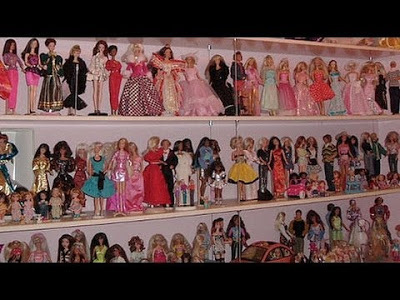
As the daylight gets darker, and head towards the night, I think about the day, and how I wasted it with little or no effort on my part. My existence has no meaning to no one Yet; my only friend is the minutes that pass me by, without even looking back. I’m on the Titanic, and as I go down, I notice time is mocking me from a great distance. If I stay alive, it is only to mark my time here as a form of habit. I collect time like a little girl who keeps up her Barbie collection in order.
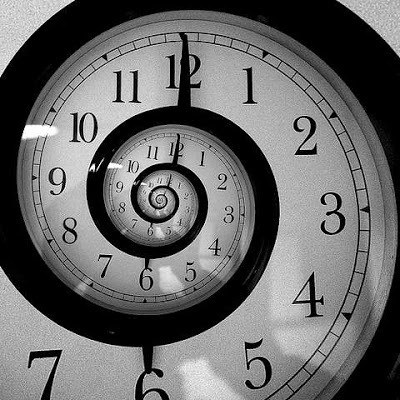
I have memories of the time that is neither good or bad. Sentimental feelings went down the bathtub drain, as I sat in the luke warm water complimenting the passage of time. The subject matter of time, as the foundation for one’s narrative, is a tricky procedure. How does a writer express the anxiety that comes with moments passing by, and not coming to any conclusion, except that the journey from Point A to Point B is an emotional disaster? The adventure is the destination to who knows where. “Ordinary life doesn’t interest me.” I realize that I have no interest whatsoever in anything to do with entertaining another. For the reader, I can’t imagine the horror of reading this text.
- Tosh Berman
Published on July 27, 2017 14:46
July 14, 2017
"Night Music: Essays on Music 1928-1962 by Theodor W. Adorno (Seagull Books)
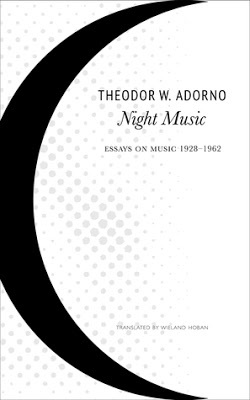 ISBN: 978-0857424501 Seagull BooksWhat I know of classical music is what I hear on record/vinyl/cd. Beyond that, almost nothing. My reaction to Classical it totally musical, and the occasional liner note on the back cover of the album. With curiosity, I picked up Theodor W. Adorno's "Night Music," in the hopes of learning more about this form of music as well as dipping into the brain of Adorno, one of the leading 'thinkers' of the Frankfurt School of critical theory. Adorno was also a composer, and what is interesting about "Night Music" is that it was written from the late 1920s to 1962. The essays are not organized in chronicle order, but in a manner that is very readable. The book consists of two collections of texts "Moments musicaux" and "Theory of New Music." When Adorno speaks of new music, he's not talking about Cage (who does get a brief mention in a later essay) but composers of his generation and time, for instance, Schönberg, who is the main figure in these series of writings, along with Berg, Webern, and Ravel. There is also the commentary on Beethoven, Wagner, and Bach, but the heart of the book is on the Second Viennese School of music. For one, it's interesting to read these essays knowing that they were written during a time when Schönberg and Ravel were active and doing music. One is not looking back, but at the present when these essays were written. The writing for me is readable, but also difficult due to its density and Adorno's knowledge of music. People who are either serious fans of Classical (especially 20th-century) or musicians will jump on this book with no problem, but for the guy or gal, it's a serious journey into the rabbit hole that is music. Seagull Books who published "Night Music" should get special notice for the design of the book, and their great taste in titles. Also, Wieland Hoban did a fantastic job in doing the translation from German to English.
ISBN: 978-0857424501 Seagull BooksWhat I know of classical music is what I hear on record/vinyl/cd. Beyond that, almost nothing. My reaction to Classical it totally musical, and the occasional liner note on the back cover of the album. With curiosity, I picked up Theodor W. Adorno's "Night Music," in the hopes of learning more about this form of music as well as dipping into the brain of Adorno, one of the leading 'thinkers' of the Frankfurt School of critical theory. Adorno was also a composer, and what is interesting about "Night Music" is that it was written from the late 1920s to 1962. The essays are not organized in chronicle order, but in a manner that is very readable. The book consists of two collections of texts "Moments musicaux" and "Theory of New Music." When Adorno speaks of new music, he's not talking about Cage (who does get a brief mention in a later essay) but composers of his generation and time, for instance, Schönberg, who is the main figure in these series of writings, along with Berg, Webern, and Ravel. There is also the commentary on Beethoven, Wagner, and Bach, but the heart of the book is on the Second Viennese School of music. For one, it's interesting to read these essays knowing that they were written during a time when Schönberg and Ravel were active and doing music. One is not looking back, but at the present when these essays were written. The writing for me is readable, but also difficult due to its density and Adorno's knowledge of music. People who are either serious fans of Classical (especially 20th-century) or musicians will jump on this book with no problem, but for the guy or gal, it's a serious journey into the rabbit hole that is music. Seagull Books who published "Night Music" should get special notice for the design of the book, and their great taste in titles. Also, Wieland Hoban did a fantastic job in doing the translation from German to English.
Published on July 14, 2017 16:45
July 11, 2017
Lun*na Menoh: "A Ring Around The Collar" Fashion Show 2017 with Les Sewing Sisters, July 22, 2017
Lun*na Menoh: "A Ring Around The Collar Fashion Show 2017, with Les Sewing Sisters July 22, 2017
 All photos by Steven Nilsson & Jennifer Cheung
All photos by Steven Nilsson & Jennifer Cheung
Contact Information : (562) 999-2267
arthappens@artexchangelb.org
ArtExchange - ArtX with the Long Beach Museum of Art
presents:
Lun*na Menoh “ A Ring Around The Collar: fashion show 2017”

For IMMEDIATE RELEASE
Lun*na Menoh “A Ring Around The Collar: fashion show 2017,”
with Les Sewing Sisters
Date: Saturday, July 22, 2017
Time: 8:00 P.M.
FREE EVENT
ArtExchange - ArtX with Long Beach Museum of Art presents “Lun*na Menoh, A Ring Around The Collar Fashion Show 2017.”
Taking place at ArtExchange Gallery, 356 East 3rd Street, Long Beach, CA, 90802 and featuring art performance/ music band Les Sewing Sisters.
Unlike a commercial fashion show, Lun*na Menoh ’s fashion show is more of a “de-fashion show.” There are Runway models changing outfits one after another but Menoh’s clothing, although wearable, is more conceptual in theme and practice. For this event/performance, Menoh’s theme of the fashion show is “ A Ring Around The Collar” which is also the title of the exhibition of her artwork that is taking place at ArtExchange/ArtX. Menoh worked on "A Ring Around The Collar" art/clothing project for 18 years, and this is her first fashion show in Long Beach. The majority of the wearable clothing is made by dirty stained white collars or the image of the dirty collar.

In addition, Les Sewing Sisters will perform their music before the fashion show.
Les Sewing Sisters are Lun*na Menoh’s music project with Saori Mitome, which uses the sewing machine as a music instrument. All music heard by Les Sewing Sisters are original sounds that come from the sewing machine and then altered through electronics, which in turn changes noise into music. Les Sewing Sisters is a mixture of spoken word, singing, jazz-influenced pop, with a side of hip-hop, yet danceable experimental noise music. All the lyrics are about dressmaking, sewing, fashion, and clothing.
Also a short video for the program:
"A Ring Around The Collar" 7 min video
Directed by Jeff Mizushima
A video directed by Jeff Mizushima on the history of Lun*na Menoh's collecting and using men's dirty white collars for her artwork. Ten years of the artwork and fashion shows that Lun*na directed and made with respect to her art.
"Lun*na Menoh has brilliantly narrowed the catwalk between art and haut couture, fashioning work that adorn bodies with thrilling ingenuity and restyles our mind.”
- Ralph Rugoff: Director of the Hayward Gallery, London
 All photos by Steven Nilsson & Jennifer Cheung
All photos by Steven Nilsson & Jennifer CheungContact Information : (562) 999-2267
arthappens@artexchangelb.org
ArtExchange - ArtX with the Long Beach Museum of Art
presents:
Lun*na Menoh “ A Ring Around The Collar: fashion show 2017”

For IMMEDIATE RELEASE
Lun*na Menoh “A Ring Around The Collar: fashion show 2017,”
with Les Sewing Sisters
Date: Saturday, July 22, 2017
Time: 8:00 P.M.
FREE EVENT
ArtExchange - ArtX with Long Beach Museum of Art presents “Lun*na Menoh, A Ring Around The Collar Fashion Show 2017.”
Taking place at ArtExchange Gallery, 356 East 3rd Street, Long Beach, CA, 90802 and featuring art performance/ music band Les Sewing Sisters.
Unlike a commercial fashion show, Lun*na Menoh ’s fashion show is more of a “de-fashion show.” There are Runway models changing outfits one after another but Menoh’s clothing, although wearable, is more conceptual in theme and practice. For this event/performance, Menoh’s theme of the fashion show is “ A Ring Around The Collar” which is also the title of the exhibition of her artwork that is taking place at ArtExchange/ArtX. Menoh worked on "A Ring Around The Collar" art/clothing project for 18 years, and this is her first fashion show in Long Beach. The majority of the wearable clothing is made by dirty stained white collars or the image of the dirty collar.

In addition, Les Sewing Sisters will perform their music before the fashion show.
Les Sewing Sisters are Lun*na Menoh’s music project with Saori Mitome, which uses the sewing machine as a music instrument. All music heard by Les Sewing Sisters are original sounds that come from the sewing machine and then altered through electronics, which in turn changes noise into music. Les Sewing Sisters is a mixture of spoken word, singing, jazz-influenced pop, with a side of hip-hop, yet danceable experimental noise music. All the lyrics are about dressmaking, sewing, fashion, and clothing.
Also a short video for the program:
"A Ring Around The Collar" 7 min video
Directed by Jeff Mizushima
A video directed by Jeff Mizushima on the history of Lun*na Menoh's collecting and using men's dirty white collars for her artwork. Ten years of the artwork and fashion shows that Lun*na directed and made with respect to her art.
"Lun*na Menoh has brilliantly narrowed the catwalk between art and haut couture, fashioning work that adorn bodies with thrilling ingenuity and restyles our mind.”
- Ralph Rugoff: Director of the Hayward Gallery, London
Published on July 11, 2017 11:36
July 3, 2017
Paul McCarthy: "WS Spinoffs, Wood Statues, Brown Rothkos" July 1 - Sept 17, 2017 at Hauser & Wirth Los Angeles
 Paul McCarthy
Paul McCarthyWS, Bookends
2013
Black walnut
Bookends (Horizontal) (12'): 365.8 x 304 x 444 cm / 144 x 119 5/8 x 174 3/4 inches (overall dimensions)
Bookends (Vertical) (14'): 444 x 303.7 x 365.8 cm / 174 3/4 x 119 5/8 x 144 inches (overall dimensions)
Paul McCarthy “WS Spinoffs, Wood Statues, Brown Rothkos” July 1 - September 17, 2017, Hauser & Wirth Los Angeles
Like many of my generation, Walt Disney’s “Snow White” has a strong presence in my life. The year I was born, so was Disneyland. So I feel very much like the child of Disney, and keep in mind, that I never actually saw the Disney "Snow White and the Seven Drawfs" film, but just the byproducts of the movie that is very much part of my childhood culture. Paul McCarthy and I are only nine years apart, so I feel that him being an American and McCarthy exposed to Disney’s world around the same time as I, there is a common understanding of that culture. Beyond that, I rarely think of Disney as an adult, even though where I live (Silver Lake / Los Feliz) there are traces of this man’s work and his world. Again, hard to avoid. Paul McCarthy jumps into the Disney world with both feet, hands, and head.
His current exhibition at the Hauser Wirth in Los Angeles is a fascinating show on many levels. When I walked into the gallery and confronted with these massive sculptures, I’m struck by not only the size of the works, but also the Black Walnut wood textures that convey the image of Snow White, The Prince, the horse, and the Seven Drawfs. I tend to draw myself to art exhibitions that take me from the outside world into another world of the artist’s making. McCarthy’s work does that in the extreme. My childhood memories came back to me that instant when I entered the show. I see the work as a re-mix version of my take on Disney’s Snow White.
Snow White came into existence courtesy of the Brothers Grimm, which they published in their first edition of “Grimms’ Fairy Tales.” In German, it’s title is “Schneewittchen. The final version of the Grimms’ version of Snow White appeared in 1854, the birth year of Oscar Wilde and 100 years away from my birth date as well. Disney, like McCarthy, totally did a re-write of the folk tale to serve his aesthetic and perhaps pleasure. I think the exhibition is not a commentary on the Grimms take of the story, but involved and obsessed with the Disney version.
The sculptures are so grand that I also thought of various portraits of Napoleon done when he was alive. Heroic, on a grand scale, with emotions on the skin level. The fact that these sculptures made out of wood have an organic feeling of nature being contained to make a human’s vision. There is also kitsch added to the mixture, which reminds me of going to my Grandma’s house and she too, with his "WS, Bookends," had fairy tale figures as bookends. Disney became not only a thought but also a product. If we have to think about Cambell Soup through the eyes of Warhol, then clearly we have to think of Walt under the telescope of McCarthy.
Snow White here (and always in my opinion) is very sexual. The boundaries between The Prince and Snow White are explicitly joined where there is no space between the figures. The same goes for the Seven Drawfs. It’s a combination of an orgy, pleasure, and perhaps pain. On the walls are McCarthy’s “Brown Rothkos” which gives the entire exhibition a sense of balance and placement. For me, it is like putting a period after the sentence. What I’ve read of the Brown Rothkos is that they are carpeting laid out in McCarthy’s designed forest in his exhibition that took place at Park Avenue Armory in 2013, and this is the drippings and residue of the individual trees that are painted on these carpets. Placed on the wall gives the work an importance, but also a connection perhaps the sculptures in this show and the exhibition at the Park Avenue Armory. In other words, these pieces can stand alone but are also connected theme-wise with other artworks by McCarthy. Like Disney’s world, it’s “a small world.”
Lucky me, I can go back to the exhibition again and again. It is both a journey into my childhood obsessions with the Disney motif, but also McCarthy’s take on a landscape that most in my (our) generation can relate to. (Un)happy Trails!
Published on July 03, 2017 15:20



